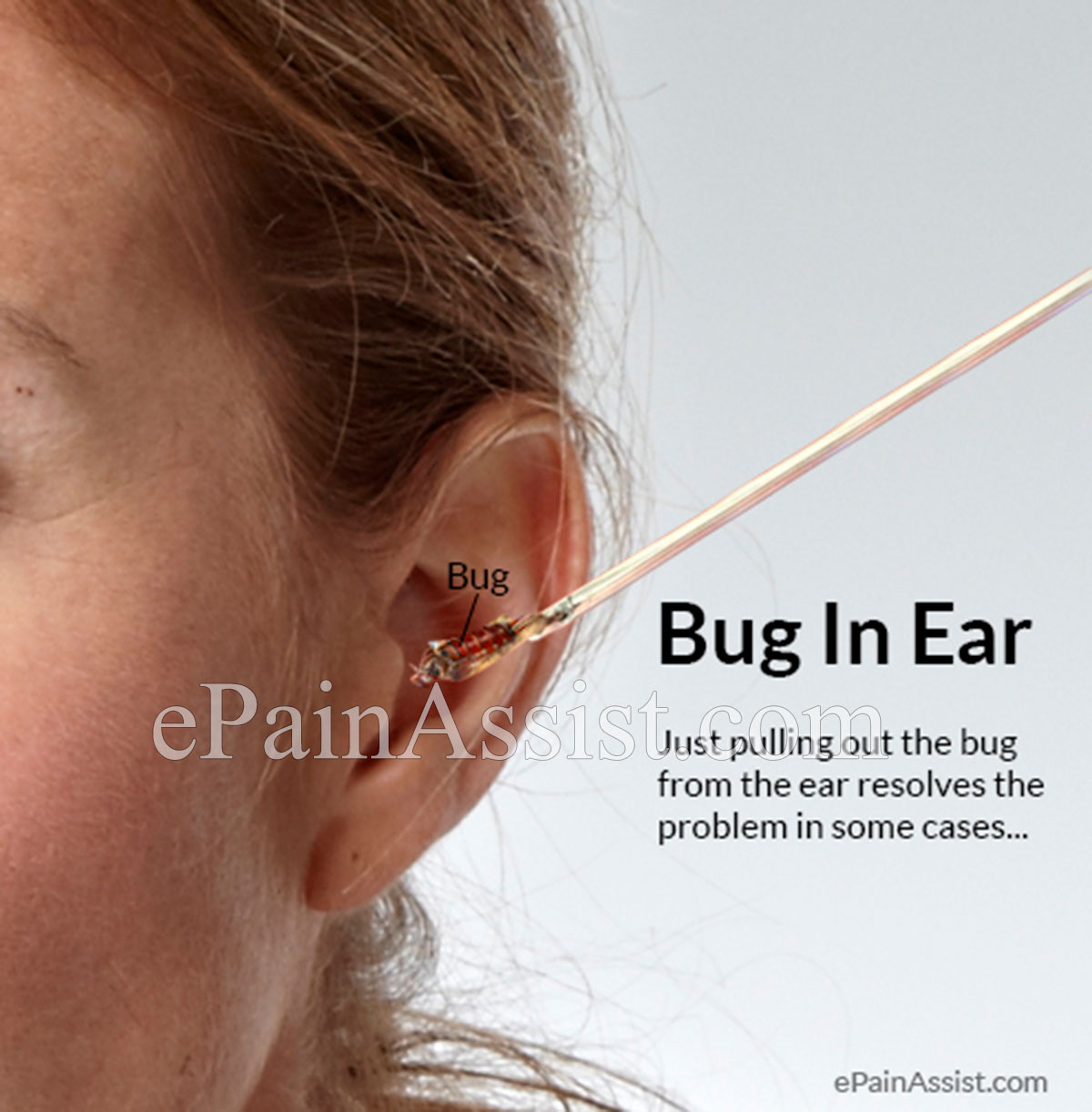One of the most common reasons for ear problems, especially in children is bug or some foreign object in the ear. This most often leads to emergency room visits due to extreme discomfort. Just pulling out the bug from the ear resolves the problem in some cases, but some other cases may lead to potential harm and rapidly lead to infection.

Generally bugs crawl or fly into the ear canal and this possibly occurs while sleeping on the ground or during outdoors such as camping. Loud buzzing sound and movements of the bug often result in pain and create discomfort for the patient. Bugs such as moths, household ants, cockroaches, and flies are the more commonly seen foreign bodies in the ear.
Bug in Ear: Watch 3D Video of Ear Pain Due to Insect In the Ear
Given Below Are 7 Methods That Help In Treating Ear Pain Caused Due To Bug In Ear:

Ear drops for Bug In Ear:
Some bugs are habituated to flying into the ear and cannot come out due to their size, shape, and behavior as a result they get stuck inside the ear. In such cases instead of poking the fingers into the ear just put some ear drops that help in flushing the bug out from the ear. If this procedure fails, then it becomes necessary to seek expert’s advice.
Oil for Bug In Ear:
Bug from the ear can also be removed by tilting the head of the patient with the affected ear in the upward direction. Putting olive oil, baby oil or mineral oil into the ear also helps in floating the bug out from the ear but always make sure to use warm oil. Putting the oil by straightening the ear canal helps in easing the entry of the oil. Pulling the earlobe gently in the backward and upward direction for an adult and backward and downward direction for a child helps the oil to slip down easily. This process suffocates the bug and forces it to float out of the ear through the oil. This method must be avoided in children who have ear tubes or people who are facing problems with bleeding or discharge from the ear or those who have a perforated eardrum.
Lidocaine for Bug In Ear:
Lidocane is an anesthetic that helps in killing the bug in the ear canal. After putting lidocane the bug is gently flushed out of the ear through warm water irrigation.
Irrigation for Bug In Ear:
Bug stuck in the ear can be removed with the help of water irrigation, but this method cannot be used in case of smooth objects, seeds and organic matter that may possibly swell up when exposed to water. Irrigation method for removing the bug from the ear can also be performed with the help of an electric ear syringe in some cases. It is important to note that the irrigation method should be avoided in case of perforated eardrum. Products such as Waterpik must be avoided as using this may result in damaging the tympanic membrane due to high pressure produced by it.
Suction and Bug In Ear:
Suction is a method which has also proved to be helpful in removing the bug from the ear in some cases. Suction is performed by holding a small catheter in the ear in contact with an bug and grasping the bug with the help of an alligator forceps. Then, a right angled hook is placed behind an bug in order to drag it out.
Paperclip and Bug In Ear:
Bent end of a paperclip can also be used to pull the bug out from the ear. This can be done by inserting the bent end of the paperclip past the bug in the affected ear and rotating it to get hold of the bug. Forceps can be used to hold the paperclip to get more stability and control while performing this. The paper clip can be then pulled outwards to pull the bug out from the ear.
Medications:
After removing the bug from the ear, inspect the external canal carefully. Generally medications are not prescribed in such cases. In case of abrasion or infection, antibiotic and steroid otic suspension such as Cipro HC or cortisporin should be put in the ear canal five times a day for about 5 to 7 days.
Interventions that push the bug deep in the ear must be avoided.
- Healthline – How to Safely Remove a Bug From Your Ear
- MedicalNewsToday – How to Get a Bug Out of Your Ear
Also Read:
